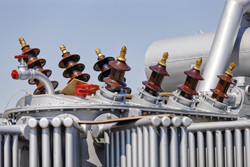Nanofillers for high-voltage insulation
High-voltage electrical insulation tape is currently far behind the state - of - the - art. It is conventionally very heterogeneous combining materials such as glass fibres, mica flakes and polymers. The multi-layer architecture provides numerous interfaces acting as thermal barriers and/or potential sources of high-voltage partial discharges. EU-funded scientists sought to develop radically improved high-voltage insulation tape through work on the project 'Advanced nano-structured tapes for electro-technical high power insulating applications' (ANASTASIA). They targeted homogenisation via incorporation of inorganic nanofillers. Demonstrator stator bars manufactured with various formulations of tapes and resins were used to assess potential performance on stator windings of generators. Scientists demonstrated important improvements with insulating materials integrating nanoparticles in either the tape or the resin. The most promising (nanosilica and boron nitride) tape improved the electrical lifetime by a factor of approximately five times and thermal conductivity by over 40%. As nano-impregnated tapes would be easier to produce in existing manufacturing systems than the resins, this is a welcome discovery. Scientists should thus be able to rapidly produce the tapes after further optimisation of the final design and formulation. ANASTASIA demonstrated enhanced performance of insulators for high-voltage applications when nanoparticles were incorporated either in the tape or the resin. Bringing power generators up to speed will have important impact on energy efficiency, emissions and energy costs.
Keywords
Electrical, high-voltage, insulation, tape, homogenisation, nanofillers, stator bars, resin, nanosilica, boron nitride



